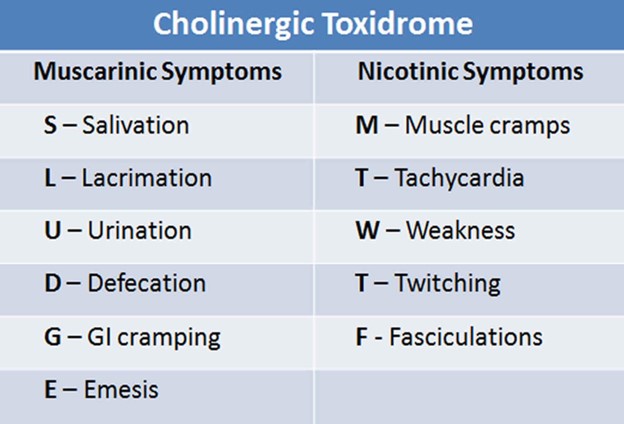A nurse is caring for a client with myasthenia gravis who is exhibiting signs of cholinergic crisis. Which medication does the nurse ensure is available to treat this crisis?
Atropine sulfate
Pyridostigmine bromide (Mestinon)
Protamine sulfate
Acetylcysteine (Mucomyst)
The Correct Answer is A
Choice A Reason: Atropine sulfate is the medication that the nurse should ensure is available to treat cholinergic crisis, as it blocks the effects of acetylcholine and reverses the symptoms of excessive parasympathetic stimulation.
Choice B Reason: Pyridostigmine bromide (Mestinon) is not the medication that the nurse should ensure is available to treat cholinergic crisis, but it is used to treat myasthenia gravis by increasing acetylcholine levels and improving muscle strength.
Choice C Reason: Protamine sulfate is not the medication that the nurse should ensure is available to treat cholinergic crisis, but it is used to reverse the effects of heparin and prevent bleeding.
Choice D Reason: Acetylcysteine (Mucomyst) is not the medication that the nurse should ensure is available to treat cholinergic crisis, but it is used to treat acetaminophen overdose and prevent liver damage.

Nursing Test Bank
Naxlex Comprehensive Predictor Exams
Related Questions
Correct Answer is D
Explanation
Choice A Reason: Calling the RN supervisor is not the priority action for the nurse, as it may delay the intervention and outcome.
Choice B Reason: Completing an incident report is not the priority action for the nurse, as it does not address the immediate problem or prevent further complications.
Choice C Reason: Checking the blood glucose level is not the priority action for the nurse, as it may confirm the error but not correct it.
Choice D Reason: Giving the client 15 to 20 g of carbohydrate is the priority action for the nurse, as it may prevent or treat hypoglycemia, which is a serious complication of insulin overdose.
Correct Answer is ["A","D","E"]
Explanation
Choice A Reason: Cloudy urine is a finding that indicates a urinary tract infection, as it shows that there are bacteria, pus, or blood in the urine.
Choice B Reason: Muscle tetany is not a finding that indicates a urinary tract infection, but it may indicate other conditions such as hypocalcemia or alkalosis.
Choice C Reason: Presence of calculi is not a finding that indicates a urinary tract infection, but it may cause or complicate a urinary tract infection by obstructing the urine flow and creating a nidus for bacterial growth.
Choice D Reason: Urinary frequency is a finding that indicates a urinary tract infection, as it shows that there is irritation and inflammation of the bladder and urethra.
Choice E Reason: Dysuria is a finding that indicates a urinary tract infection, as it shows that there is pain or burning sensation during urination.
Whether you are a student looking to ace your exams or a practicing nurse seeking to enhance your expertise , our nursing education contents will empower you with the confidence and competence to make a difference in the lives of patients and become a respected leader in the healthcare field.
Visit Naxlex, invest in your future and unlock endless possibilities with our unparalleled nursing education contents today
Report Wrong Answer on the Current Question
Do you disagree with the answer? If yes, what is your expected answer? Explain.
Kindly be descriptive with the issue you are facing.
